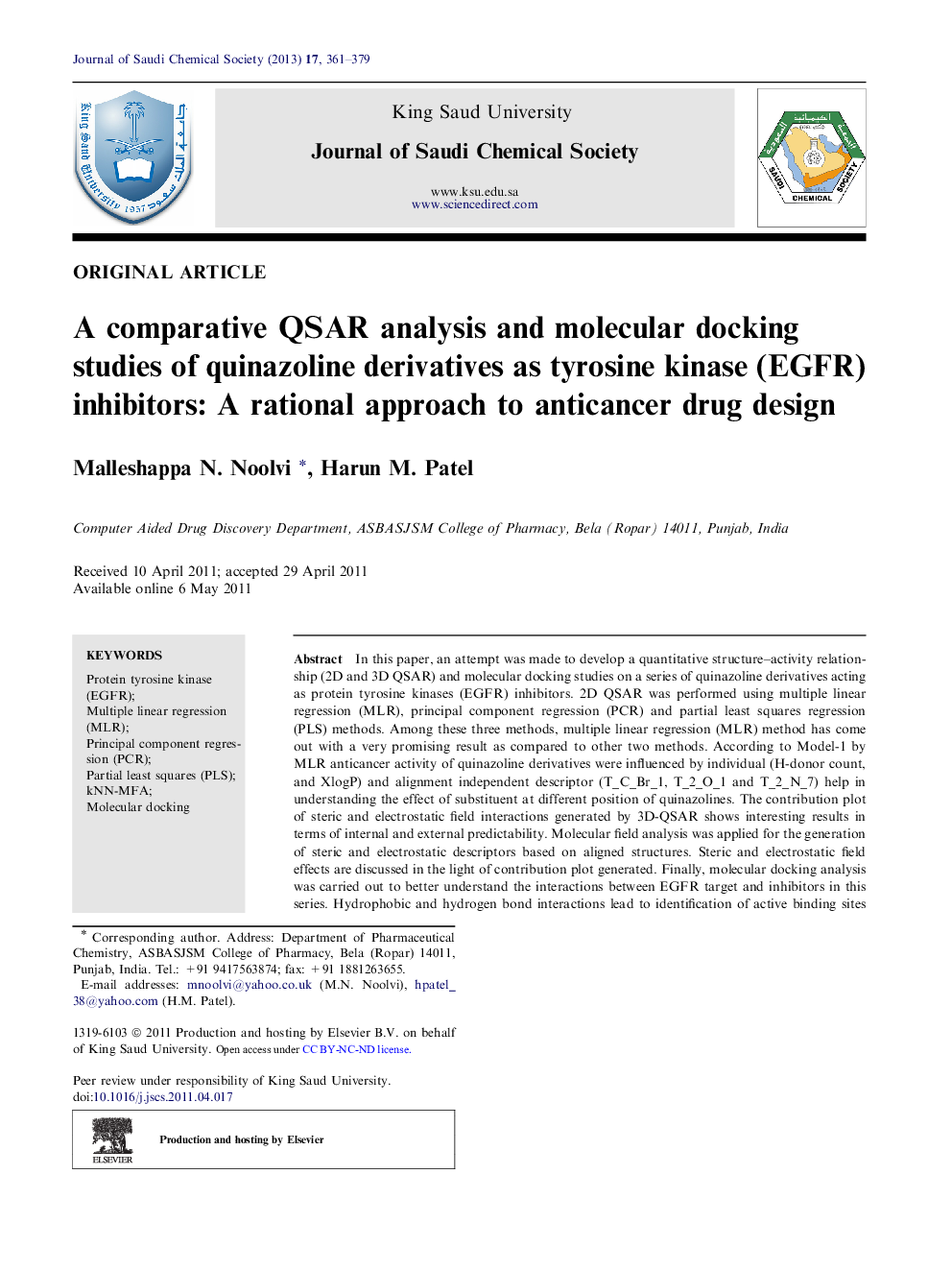| Article ID | Journal | Published Year | Pages | File Type |
|---|---|---|---|---|
| 229778 | Journal of Saudi Chemical Society | 2013 | 19 Pages |
In this paper, an attempt was made to develop a quantitative structure–activity relationship (2D and 3D QSAR) and molecular docking studies on a series of quinazoline derivatives acting as protein tyrosine kinases (EGFR) inhibitors. 2D QSAR was performed using multiple linear regression (MLR), principal component regression (PCR) and partial least squares regression (PLS) methods. Among these three methods, multiple linear regression (MLR) method has come out with a very promising result as compared to other two methods. According to Model-1 by MLR anticancer activity of quinazoline derivatives were influenced by individual (H-donor count, and XlogP) and alignment independent descriptor (T_C_Br_1, T_2_O_1 and T_2_N_7) help in understanding the effect of substituent at different position of quinazolines. The contribution plot of steric and electrostatic field interactions generated by 3D-QSAR shows interesting results in terms of internal and external predictability. Molecular field analysis was applied for the generation of steric and electrostatic descriptors based on aligned structures. Steric and electrostatic field effects are discussed in the light of contribution plot generated. Finally, molecular docking analysis was carried out to better understand the interactions between EGFR target and inhibitors in this series. Hydrophobic and hydrogen bond interactions lead to identification of active binding sites of EGFR protein in the docked complex. The present study is more versatile than the earlier reported methods. Hence the model proposed in this work can be employed to design new derivatives of quinazoline with specific tyrosine kinase (EGFR) inhibitory activity.
